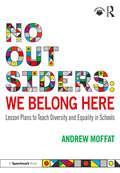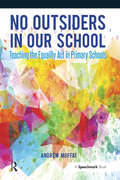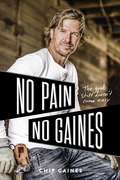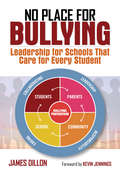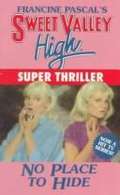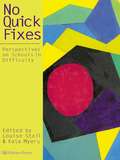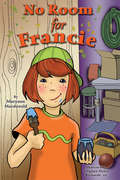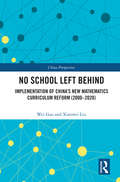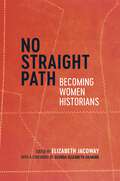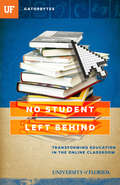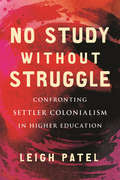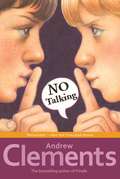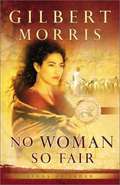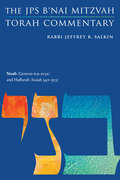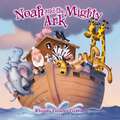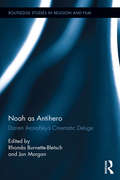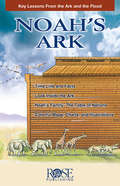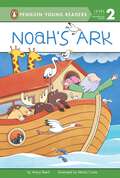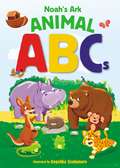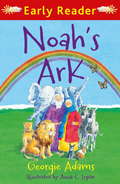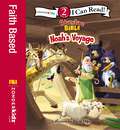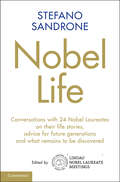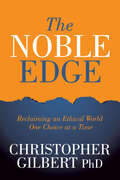- Table View
- List View
No Outsiders: Lesson Plans to Teach Diversity and Equality in Schools (No Outsiders)
by Andrew MoffatWhat does modern Britain look like and how do we prepare our children for life in an ever-changing world? We want children to be able to live and work anywhere and with anyone without fear and without judgement.Schools need a strong, confident framework where young people are taught to explore and value their own identities and the identities of others. No Outsiders is a whole school ethos teaching children that everyone is different, and everyone belongs: there are no outsiders at our school because everyone is welcome. Using this book and a common language threaded throughout the school, we can work to challenge prejudice in wider society. The book includes: 43 lesson plans and assembly ideas. A framework to deliver an inclusive curriculum built around picture books written for children aged 4-11, many of which will already be in school libraries. The stories of Head Teachers, speaking of their journeys, challenges, and successes. Innovative ways to keep parents informed and involved. Steeped in current practice and easy to implement in your school, No Outsiders: We Belong Here expands the No Outsiders collection with a wealth of new lesson plans and will be an essential resource for primary school teachers, school leaders, and teacher-training providers.
No Outsiders in Our School: Teaching the Equality Act in Primary Schools
by Andrew MoffatThis brand new resource provides much needed support for every primary school in the delivery of the objectives outlined in the Equality Act 2010; and in the provision of personal, social, health and economic education (PSHE) for every child. This resource provides teachers with a curriculum that promotes equality for all sections of the community. But more than that, the resource aims to bring children and parents on board from the start so that children leave primary school happy and excited about living in a community full of difference and diversity, whether that difference is through ethnicity, gender, ability, sexual orientation, gender identity, age or religion. The resource includes 5 lesson plans for every primary school year group (EYFS- Y6) based upon a selection of 35 picture books. Issues addressed include: gender and gender identity, religion, sexual orientation, disability and age. There is an introductory chapter explaining the legal framework behind the resource, quoting Ofsted and the DfE. A second chapter focuses on creating the whole school ethos through assemblies, school displays and after school clubs. A third chapter focuses on engaging parents. Age 7+ Format 96pp, paperback (245 x 171mm) Andrew has been a full time teacher for 20 years and is currently the Assistant Head Teacher in a large primary school in inner city Birmingham.
No Pain, No Gaines: The Good Stuff Doesn't Come Easy
by Chip GainesNo Pain, No Gaines is a by-the-bootstraps manual for building a network of people you can count on. Fair warning: building it will be painful, but what you&’ll gain is something strong, something reliable, and something that can change the world.Spoiler alert #1: This is a book about networksSpoiler alert #2: This is not a book about networking Not networking in the traditional sense anyway. It&’s not about how to leverage your interactions with everyone you meet in an all-out sprint to get ahead. It&’s about how to find a group of real people who will stand beside you as you bust your butt, who believe that authentic human connection is more important than any other earthly thing, and who bet on each other instead of the status quo. People with beating hearts and passions who live and love and try and fail and try again. People who lift you up and give your life meaning. Written for anyone who believes that relationships are more than transactions, and who is looking to build a network of people they can count on, No Pain, No Gaines will coach you on how tolook outside yourself and your circle and foster connections with othersvalue what you bring to the tableresist the status quofind the risks worth takingengage and be awake to life, not asleep at the wheelget comfortable with being uncomfortably kindbuild a network you trust and then trust the network you buildChip Gaines has been building that kind of network his whole life, and he can tell you, it doesn&’t come easy. The good stuff never does. It requires faith in people. It requires hope. And it requires a willingness to grow even when it hurts. In No Pain, No Gaines, through hard-won lessons and personal stories, Chip will coach you on how to build a network of your own that will make your life rich and your relationships run deep.
No Place for Bullying: Leadership for Schools That Care for Every Student
by James E. DillonDiscover the keys to successful bullying prevention! This book describes the paradigm shifts a school leader needs to create in order to develop and lead a schoolwide bullying prevention program. Anti-bullying efforts often fail because they do not have full support from every school stakeholder, including parents. This accessible book makes it easy to implement the three critical components of effective leadership for bullying prevention: <p><p> The WILL to address the problem <p> The SKILL to lead others to help reduce and prevent bullying <p> The FOLLOW-THROUGH for ensuring anti-bullying policies are established and sustained
No Place To Hide (Sweet Valley High Super Thrillers #3)
by Francine Pascal Kate WilliamFor the first time since his sister's death, Nicholas Morrow seems almost happy again; he has fallen in love with a mysterious girl named Barbara. But the twins uncover clues to Barbara's past that point to murder. Is Barbara really who she seems to be?
No Quick Fixes: Perspectives on Schools in Difficulty
by Louise Stoll Kate MyersThe challenge of school improvement for failing schools is a complex and much debated issue. This text attempts to help those working in, or working with, failing schools and aims to contradict the notion that there are no quick fixes for schools in difficulty. The issue of failing schools is looked at from a number of viewpoints. Section one contains policy perspectives; section two contains three schools' perspectives; section three contains chapters written by three external facilitators; section four addresses the issues from three prominant school effectiveness researchers; and section five gives international perspectives from the co-ordinator of the OECD Combating School Failure initiative.
No Room for Francie
by Maryann MacdonaldFrancie O'Leary and her friends decide to start a Comics Club and they need a place to meet. The trouble is that Francie has lots of siblings, and things are awfully busy at the O'Leary house. How will she come up with a clubhouse space to call her own and impress her friends? Kids ages 6-8 will love this relatable, feisty Catholic heroine!
No School Left Behind: Implementation of China’s New Mathematics Curriculum Reform (2000–2020) (China Perspectives)
by Wei Gao Xianwei LiuBased on the fieldwork carried out at two elementary schools, Merits School and Pioneer School, in northeastern China, the monograph details how local schools enacted the New Mathematics Curriculum Reform that was launched in early 2000. The trajectory of the reform implementation at each school was plotted out. Both schools resorted to a long-standing quality control mechanism, i.e., teaching norms, to operationalize the reform ideas. The mechanism functioned by placing teachers under measurable supervision and evaluation aligned with the reform. The schools responded to the reform following school people’s raising practical concerns, as well as the established school culture. Merits School arrived at a "two-faced strategy" to cope with the reform. Pioneer School managed to maintain a balance between promoting reform pedagogy and maintaining good test rankings. Both schools marginally involved parents in the implementation of the reform. This study suggests that to achieve success, reformers need to place equal emphasis on the transformation of teachers as well as local policymakers. This book enriches the existing literature on the implementation of mathematics curriculum reform at the school level and brings insights into the schools’ implementation decisions, which will appeal to policymakers, curriculum researchers and administrators.
No Straight Path: Becoming Women Historians
by Stephanie R. Rolph Beverly Bond Emily Clark Sylvia R. Frey Gail Murray Elizabeth Payne Shelia Skemp Janann Sherman Martha H. Swain Pamela TylerNo Straight Path tells the stories of ten successful female historians who came of age in an era when it was unusual for women to pursue careers in academia, especially in the field of history. These first-person accounts illuminate the experiences women of the post–World War II generation encountered when they chose to enter this male-dominated professional world. None of the contributors took a straight path into the profession; most first opted instead for the more conventional pursuits of college, public-school teaching, marriage, and motherhood. Despite these commonalities, their stories are individually unique: one rose from poverty in Arkansas to attend graduate school at Rutgers before earning the chairmanship of the history department at the University of Memphis; another pursued an archaeology degree, studied social work, and served as a college administrator before becoming a history professor at Tulane University; a third was a lobbyist who attended seminary, then taught high school, entered the history graduate program at Indiana University, and helped develop two honors colleges before entering academia; and yet another grew up in segregated Memphis and then worked in public schools in New Jersey before earning a graduate degree in history at the University of Memphis, where she now teaches. The experiences of the other historians featured in this collection are equally varied and distinctive. Several themes emerge in their collective stories. Most assumed they would become teachers, nurses, secretaries, or society ladies—the only “respectable” choices available to women at the time. The obligations of marriage and family, they believed, would far outweigh their careers outside the home. Upon making the unusual decision, at the time, to move beyond high-school teaching and attend graduate school, few grasped the extent to which men dominated the field of history or that they would be perceived by many as little more than objects of sexual desire. The work/home balance proved problematic for them throughout their careers, as they struggled to combine the needs and demands of their families with the expectations of the profession. These women had no road maps to follow. The giants who preceded them—Gerda Lerner, Anne Firor Scott, Linda K. Kerber, Joan Wallach Scott, A. Elizabeth Taylor, and others—had breached the gates but only with great drive and determination. Few of the contributors to No Straight Path expected to undertake such heroics or to rise to that level of accomplishment. They may have had modest expectations when entering the field, but with the help of female scholars past and present, they kept climbing and reached a level of success within the profession that holds great promise for the women who follow.
No Student Left Behind: Transforming Education in the Online Classroom
by Jon Silman University of FloridaThe University of Florida has an ambitious goal: to harness the power of its faculty, staff, students, and alumni to solve some of society's most pressing problems and to become a resource for the state of Florida, the nation, and the world. For many years, higher education was mostly limited to affluent white males, but distance-learning helped open the door to students from all walks of life. Today, the Internet is picking up where distance-learning left off, transforming not only where and how we learn but also who can be a student. At the center of this quest to break down barriers to learning and move closer to the ideal of learning for all is Carole Beal, head of the University of Florida's new Online Learning Institute. Along with Beal, collaborators from UF's colleges of Education, Engineering, Journalism and Communications, and the Arts team up to combine technology and pedagogy with the aim of helping students who might otherwise be left behind, including students with disabilities. The interdisciplinary efforts of the institute also feature the work of UF's Digital Worlds Institute and UF Online, one of the nation's first totally online undergraduate programs. No Student Left Behind traces the earliest correspondence programs to the most cutting-edge practices of online learning at UF, looking at some of the first implementations of an online class and exploring how the brain works in front of a computer screen. The stories chronicled in GATORBYTES span all colleges and units across the UF campus. They detail the far-reaching impact of UF's research, technologies, and innovations--and the UF faculty members dedicated to them. Gatorbytes describe how UF is continuing to build on its strengths and extend the reach of its efforts so that it can help even more people in even more places.
No Study Without Struggle: Confronting Settler Colonialism in Higher Education
by Leigh PatelExamines how student protest against structural inequalities on campus pushes academic institutions to reckon with their legacy built on slavery and stolen Indigenous landsUsing campus social justice movements as an entry point, Leigh Patel shows how the struggles in higher education often directly challenged the tension between narratives of education as a pathway to improvement and the structural reality of settler colonialism that creates and protects wealth for a select few. Through original research and interviews with activists and organizers from Black Lives Matter, The Black Panther party, the Student Nonviolent Coordinating Committee, the Combahee River Collective, and the Young Lords, Patel argues that the struggle on campuses reflect a starting point for higher education to confront settler strategies. She reveals how blurring the histories of slavery and Indigenous removal only traps us in history and perpetuates race, class, and gender inequalities. By acknowledging and challenging settler colonialism, Patel outlines the importance of understanding the relationship between the struggle and study and how this understanding is vital for societal improvement.
No Talking (Chicka Chicka Book)
by Andrew Clements Mark ElliottIn No Talking, Andrew Clements portrays a battle of wills between some spunky kids and a creative teacher with the perfect pitch for elementary school life that made Frindle an instant classic.It's boys vs. girls when the noisiest, most talkative, and most competitive fifth graders in history challenge one another to see who can go longer without talking. Teachers and school administrators are in an uproar, until an innovative teacher sees how the kids' experiment can provide a terrific and unique lesson in communication.
No Woman So Fair (Lions Of Judah, Book #2)
by Gilbert MorrisFor the love of a simple shepherd, the beautiful Sarai abandons her urban life of riches and idols for a nomadic existence in the desert. Trusting in her husband's God, she follows Abram to a land of promise. The journey is filled with difficulty. When drought forces them to seek respite, they settle in Egypt, where Pharaoh is so taken by Sarai's beauty he claims her for his own ... and where Sarai discovers God for herself. When God's repeated promise to give them a child appears forgotten, Sarai and Abram battle with doubt. Is their faith strong enough to resist the temptation to fulfill God's plans in their own way?
Noah: The JPS B'nai Mitzvah Torah Commentary (JPS Study Bible)
by Rabbi Jeffrey K. SalkinNoah (Genesis 6:9-11:32) and Haftarah (Isaiah 54:1-55:5): The JPS B’nai Mitzvah Torah Commentary shows teens in their own language how Torah addresses the issues in their world. The conversational tone is inviting and dignified, concise and substantial, direct and informative. Each pamphlet includes a general introduction, two model divrei Torah on the weekly Torah portion, and one model davar Torah on the weekly Haftarah portion. Jewish learning—for young people and adults—will never be the same. The complete set of weekly portions is available in Rabbi Jeffrey K. Salkin’s book The JPS B’nai Mitzvah Torah Commentary (JPS, 2017).
Noah and the Mighty Ark
by ZondervanNoah built the mighty ark. Then he called creatures that “crept or crawled or hopped or flew or stomped or tromped, or s-s-slithered too.” Children will love hearing how Noah comforts all the animals on their journey in this beloved Bible story brought to life with lyrical rhyming text by Rhonda Gowler Greene and whimsical illustrations by award-winning artist Margaret Spengler.
Noah as Antihero: Darren Aronofsky’s Cinematic Deluge (Routledge Studies in Religion and Film)
by Rhonda Burnette-Bletsch Jon MorganThis collection of essays by biblical scholars is the first book-length treatment of the 2014 film Noah, directed by Darren Aronofsky. The film has proved to be of great interest to scholars working on the interface between the Bible and popular culture, not only because it was heralded as the first of a new generation of biblical blockbusters, but also because of its bold, provocative, and yet unusually nuanced approach to the interpretation and use of the Noah tradition, in both its biblical and extra-biblical forms. The book’s chapters, written by both well-established and up-and-coming scholars, engage with and analyze a broad range of issues raised by the film, including: its employment and interpretation of the ancient Noah traditions; its engagement with contemporary environmental themes and representation of non-human animals; its place within the history of cinematic depictions of the flood, status as an ‘epic’, and associated relationship to spectacle; the theological implications of its representation of a hidden and silent Creator and responses to perceived revelation; the controversies surrounding its reception among religious audiences, especially in the Muslim world; and the nature and implications of its convoluted racial and gender politics. Noah as Antihero will be of considerable interest to scholars conducting research in the areas of religion and film, contemporary hermeneutics, reception history, religion and popular culture, feminist criticism, and ecological ethics.
Noah's Ark: Opposing Viewpoints
by Patricia KitePresents opposing viewpoints on the legendary Ark and Flood, discussing research done to prove one way or another if there is a historical basis to the "great mystery. "
Noah's Ark
by Rose PublishingThis Noah's Ark Pamphlet is a booklet that shows a Noah's Ark picture drawn to the size and description in the Bible in Genesis 5.Noah's Ark DiagramThe Noah's Ark Pamphlet includes a fold-out picture that compares the massive Ark to common objects. Noah's Ark was longer than a football field or a soccer field, in fact 50 feet longer. Noah's Ark was 450 feet long (138 meters), and 75 feet wide (23 meters). Noah's Ark was wider than a semi-trailer truck.This Noah's Ark Pamphlet shows you the inside of Noah's ark based on the biblical description. What we know about the layout and floor plan of the Ark is shown in this fold-out Noah's Ark picture: We know the dimensions, the height, length, and width. We know it had 3 decks, and that Noah's Ark held animals for more than a year. This incredible Noah's Ark diagram is perfect for Sunday school lessons, Bible studies, and homeschool curriculum.So make yourself an ark of cypress wood; make rooms in it and coat it with pitch inside and out. This is how you are to build it: The ark is to be three hundred cubits long, fifty cubits wide and thirty cubits high. Make a roof for it, leaving below the roof an opening one cubit high all around. Put a door in the side of the ark and make lower, middle and upper decks.--Genesis 5:14-16The Noah's Ark booklet shows the massive ark and and artist's rendition of the inside of the Ark. It explains how Noah could house all of the animals on board, it also shows the size of Noah's Ark compared to giraffes, elephants and hippos.Using the Bible chronology, this handy pamphlet also includes a Noah's Ark Timeline of Events.Noah's Ark Pamphlet Includes A Timeline of EventsTimeline: Noah's Ark and the FloodTimeline: Noah, His Family and the Animals Leave Ark
Noah's Ark (Penguin Young Readers, Level 2)
by Avery ReedOne of the most well-known biblical stories joins the Penguin Young Readers program! This simple, easy-to-read story tells the centuries-old biblical tale of Noah and his ark. When God warns Noah that he will unleash a powerful rainstorm from the heavens, Noah builds the boat that will keep him, his family, and two of every animal in the world safe during the great storm that lasts for forty days and forty nights.
Noah's Ark Animal ABCs
by ZondervanPlayful and educational, Noah&’s Ark Animal ABCs brings alphabet learning together with a family favorite: the animals of Noah&’s ark!With engaging and eye-popping illustrations of animals for each letter of the alphabet, young readers will love guessing which creature comes next. From Ant to Zebra, this delightful book introduces children to the alphabet and some of the interesting creatures aboard Noah&’s ark. Perfect for parents and children to enjoy together!Noah&’s Ark Animal ABCs:Features easy-to-learn alphabet words and interesting animalsOffers bright, eye-catching illustrations to enhance word memory
Noah's Ark (Early Reader)
by Georgie Adams Anna Cynthia LeplarEarly Readers are stepping stones from picture books to reading books. A blue Early Reader is perfect for sharing and reading together. A red Early Reader is the next step on your reading journey. Georgie Adams' retelling of the story of Noah and the flood is written with delightful simplicity, and illustrated with charming soft watercolours in this full colour book, perfect for Early Readers.
Noah's Flood
by William Ryan Walter PitmanThe New Scientific Discoveries About the Event That Changed History
Noah's Voyage: Level 2 (I Can Read! / Adventure Bible)
by ZondervanWhen God asks a good man named Noah to build an ark and put his family and two of every animal on it, Noah says, &“Yes!&” Will Noah get the job done before the big rains come to cover the earth?This is a Level Two I Can Read! book, which means it&’s perfect for children learning to sound out words and sentences. It aligns with guided reading level J and will be of interest to children Pre-K to 4th grade.
Nobel Life: Conversations with 24 Nobel Laureates on their Life Stories, Advice for Future Generations and What Remains to be Discovered
by Stefano SandroneFew people have changed the world like the Nobel Prize winners. Their breakthrough discoveries have revolutionised medicine, chemistry, physics and economics. Nobel Life consists of original interviews with twenty-four Nobel Prize winners. Each of them has a unique story to tell. They recall their eureka moments and the challenges they overcame along the way, give advice to inspire future generations and discuss what remains to be discovered. Engaging and thought-provoking, Nobel Life provides an insight into life behind the Nobel Prize winners. A call from Stockholm turned a group of twenty-four academics into Nobel Prize winners. This is their call to the next generations worldwide.
The Noble Edge: Reclaiming an Ethical World One Choice at a Time
by Christopher GilbertBeing trusted is the foundation of our greatest personal freedoms. In a time of deepening divisions and “alternative facts”, trust and authenticity grow more precious by the hour. More and more people find themselves driven to overcome the personal, professional and social pressures for ignoring what is right in favor of what passes for ‘success.’ They want: • Truth in their decisions • Authenticity in their relationships, and • Solid ground for making tough, ethical choices in business and life Winner of the Paris Book Festival Award, NABE Pinnacle Book Achievement Award, International Impact Book Award, Literary Titan Book Award, Firebird Book Awards in three categories, NYC Big Book Award, Canadian Book Club Award and Hollywood Book Festival Runner-up for Best Business. The Noble Edge: Reclaiming an Ethical World One Choice at a Time provides these answers as Dr. Christopher Gilbert invites readers into an inspirational conversation spiced with personal stories, humorous anecdotes and invaluable guidance about making consistently good choices. Based on three research-proven steps and nine principles for leading an ethically driven life, The Noble Edge brings a fresh approach to personal growth and inspires real change to empower a brighter future. As useful in the board room as the family room, this easy-to-follow book contains insightful stories and a powerful model that sharpens the ethical lens and empowers readers to examine their own standards and values by applying transformational concepts to their life. Most importantly, readers will finish The Noble Edge encouraged that they have the power and capacities— individually and collectively— to achieve moral progress and bring better ethics into their organizations, families, communities and the world.
